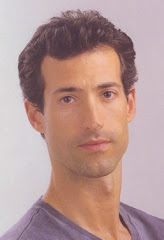One thing that I think most people in this field will agree on is that you can continue to learn completely new ways of seeing, feeling, and moving no matter what age or experience you are. Lately, I have discovered in myself a newfound sense of equilibrium that oddly enough came from beginning rigorous strength training. Like many people, I had hit a plateau in my training and was feeling frustrated. In addition, I was experiencing pain and aches in my joints which I first attributed to aging, but my gut intuition was telling me I needed to change my routine. Stretching and core strength was great, but I needed to get stronger in an athletic way. When I do resistance training, I still bring all my awareness of correct alignment and centering to the workout. I listen to my body and constantly adapt the positioning and motion of exercises to maintain optimal form and control. Nevertheless, it gets pretty intense and I have had to push myself harder than I thought. Long story short, it may seem inconsistent for a Pilates and yoga instructor to use strength training to solve a training issue, but it actually made physiological sense. The ligaments and cartilage in my joints had been getting overstretched from years of doing my practice, and I needed the muscles to get stronger to support the joints. I'm sure that there are many people who have similar experiences, but it is not always easy to know when you are listening to your gut in an intuitive way, and when you are just reacting in reflexive manner.
By the time we reach adulthood, most of us have developed core beliefs about ourselves and our bodies and these ideas affect the way we move and hold ourselves daily. Often, we have ideas or beliefs about our bodies that influence our neuromuscular patterns, which are the way we unconsciously initiate movement and react to instructions. These ingrained reflexes can block the mind/body from connecting and may create inefficient movement and eventually lead to imbalanced development. This is almost impossible to recognize on your own and, even with the help of a trained professional, it can take months to relearn how to initiate movement in a different way. Even then, the changes won’t stick unless you can begin to let go of old beliefs and start to see yourself differently. In my years of training clients, I have often found that the people who have chronic back or joint problems are also the people who have the most ingrained negative movement patterns and have the most difficulty following basic functional awareness exercises. This observation has been proven in scientific experiments where they took two groups of people: one with a history of common back ailments, and the other without, and they gave each of them simple instructions on how to lift objects safely. The group without a history of back pain was able to follow the instructions correctly, where as the problem group totally failed to follow instructions. The conclusion of the study was that people with chronic back pain need training in basic motor skills (mind/body awareness) before therapeutic treatment. In my own teaching practice, I have found that some people have no connection to some parts of their bodies and have exactly the wrong instincts when it comes to moving efficiently. They push the abdominals out, they bend when they are asked to straighten, they hunch their shoulders, they hold their breath, etc. Again, these are the same people that have chronic lower back pain, neck pain, shoulder pain, etc. So, we can't say that it is always wise to follow your instincts when it comes to training as, for some, it could mean following negative patterning coming from a deep lack of awareness.
Intuitive learning actually means to be open for different ways of feeling things and seeing things and at the same time reflecting on what your body is telling you and what you have learned from past experiences. It means letting go of pre-conceived notions or expectations and taking your time to experience something new. That being said, the first time you try something, you need to also listen to your intuition with regards to what someone is telling you to do. Try to take into account the whole setting of where you are and whether you feel the instructor is acting on automatic or is connecting to you and the rest of the class. Many times I have seen instructors who think they are there to challenge the class to meet them on their terms. That can be ok if you are aware of this negative energy and stay within yourself. You might not have expected it, but sometimes staying within yourself can be the intuitive way to go. I highly recommend that everyone practice on their own. Not only does this develop independence, it allows you to fully connect with your intuitive guide. The more experienced you are, the greater the benefits from these solo workouts. During these times you can practice doing a different warm-up, one where you fine-tune into your body. You can do similar exercises you have done before but change qualitative focus, such as performing some things a lot slower or leaving the arms relaxed in standing poses. You will be certain to discover something new about your body and this could take you in a direction you might never have thought about before.
Next time, I'll talk about the reality that how you move determines the shape of your body.
Subscribe to:
Post Comments (Atom)

No comments:
Post a Comment